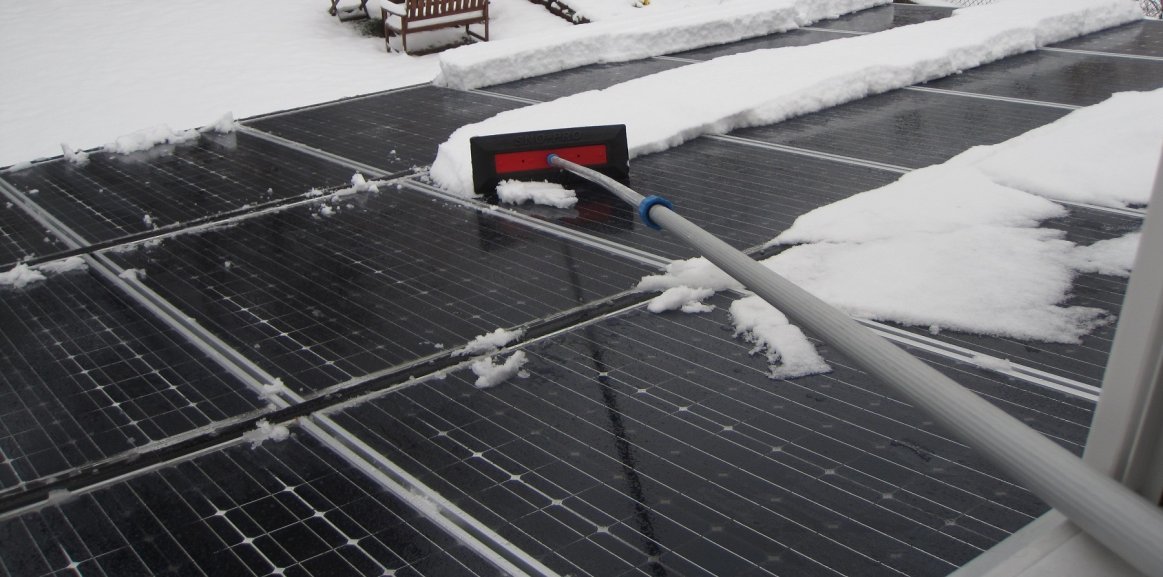
How is Energy Production Impacted?
It's a well-known fact that as the temperature drops below 77 degrees F (the temperature at which modules are rated, 25C) their voltage increases, as does their power in equal illumination. Once there is a light dusting of snow, power starts to drop but doesn't shut down until a thick layer of snow blocks out the modules entirely. With their typical tilt of anywhere from 15 to 60 degrees, modules will again start producing power when a slight thaw or wind clears off the snow again. Interestingly (and as anyone who has been sunburned while skiing will tell you) the surrounding snow can actually cause production to exceed 100% of the modules' rating due to reflected light. A bonus to systems with microinverters, AC modules, and DC optimizers is that as modules are uncovered they can go into full production even while other modules in the array remain buried.
Should I Clean My Panels?
So the big question is: Do you waste your snow day cleaning off the roof or do you go cross-country skiing to your favorite coffee shop instead? Given that the available sun hours in the middle of winter are at their lowest1, there is probably not much reason to rush out and uncover your modules. If the decision is made to clean, a roof rake2 should be used to avoid being buried under an avalanche or slipping and falling off the roof. On the Eastern Seaboard of the US, it's probably better to wait the 2 or 3 days it will take for the roof snow to melt and slide off. Inland, with a roof rake, it might make sense to clean off the array and harvest the winter sunlight bouncing off the snowy surroundings.
Published
6 years 3 months ago
Topics
Keywords